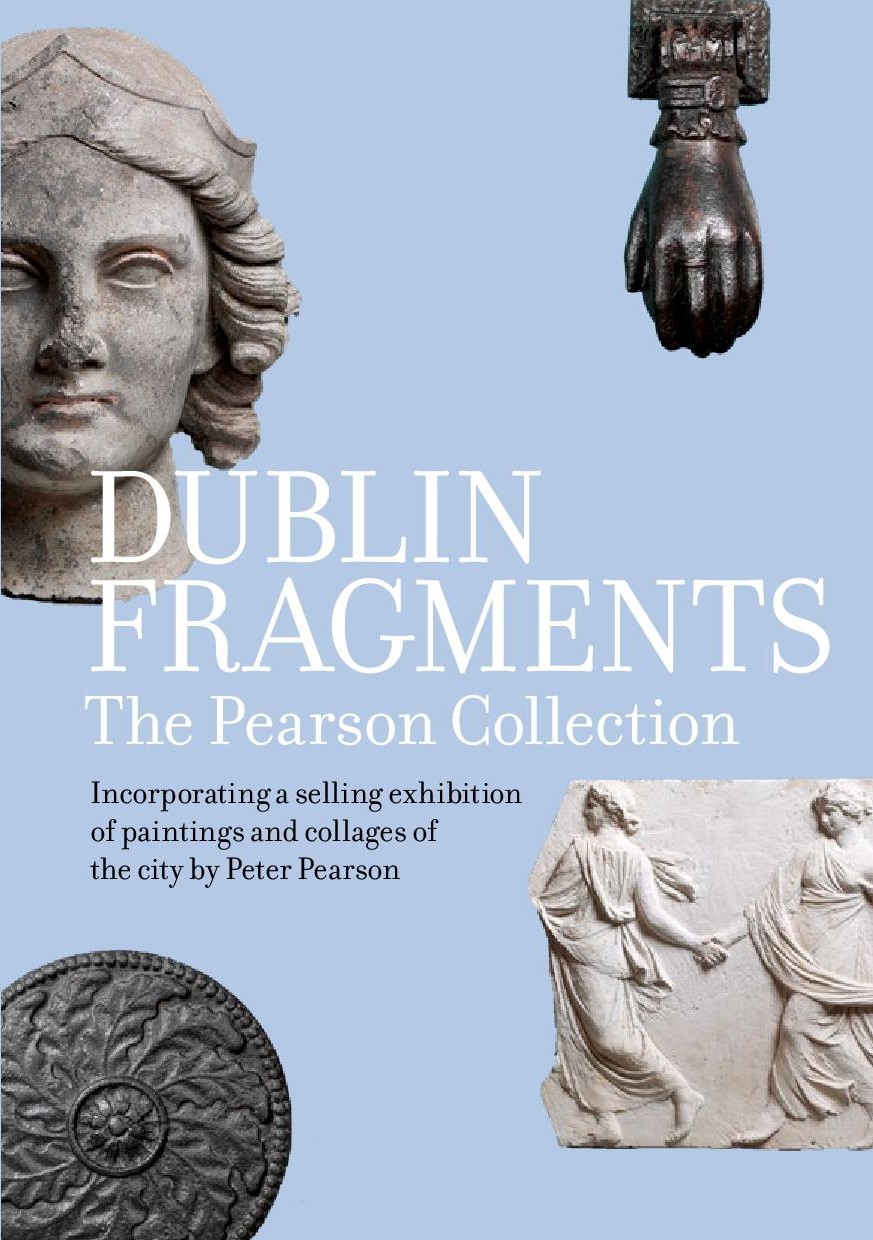Spring Exhibition - 'Dublin Fragments: The Pearson Collection'
06.02.2020
Posted by IGS

Dublin Fragments: The Pearson Collection
Extended until January 2021
Open Tuesday to Sunday, 10.00am to 5.00pm (closed Monday)
City Assembly House, 58 South William Street, Dublin 2
www.igs.ie
#DublinFragments
This Spring the Irish Georgian Society are delighted to present Dublin Fragments: The Pearson Collection curated by artist Peter Pearson.
This exhibition of architectural fragments and installations presents a dazzling display of Dublin craftsmanship. Today, most significant buildings are protected, thus it is (or should be) impossible to salvage such artefacts as these rescued since the sixties from demolished buildings.
Seen here out of their natural settings, this display of fanlight and plasterwork, architrave and woodwork, cast and wrought iron only accentuates their intrinsic beauty. The creativity of those talented craftsmen show mementos of a time and people long gone. Much has been written about whole streets razed, mostly between 1960 and 1990, and there are many fascinating photographs of what has been lost. Here too are items from public buildings: one of the iron cramps from the Custom House which caused so much damage to its stonework; a plasterwork acorn from the Four Courts rescued before the 1920 fire; City Hall plasterwork; and there’s a decorative toilet from Dublin castle!
When does a few items become a collection? When there are several examples of the same type of railing head, you have the basis of a collection. The speed of demolition in Dublin city and county in the 1980s made it possible to acquire these objects, but they did not simply fall out of the sky! Attempts were first made through the Planning process to prevent such destruction. Often being unsuccessful, this led to the hour of demolition - if one was lucky enough to know when it might happen. In general, nobody wanted to save anything and developers were keen to clear a site speedily. Some of the bigger elements were recycled - slates from two houses went for the re-roofing of Drimnagh Castle; joists, floorboards, doors and mouldings were always useful. Rescuing ironwork balconies or plasterwork required time, tools, dexterity, help from like-minded friends, and transport. Much was moved on the back of motorbikes; cars were willingly lent for larger items. Plasterwork had to be detached, sometimes using a hatchet, whilst balancing on makeshift scaffolds made out of old wardrobes and joists.
The black filth of demolition, dust in the eyes, splinters and sharp nails were all routine hazards, not to mention the lifting of very heavy stones and timbers! Lastly, space was needed to store everything – usually in basements or outside sheds.
This form of collecting fragments from a wide range of Dublin’s built heritage can be regarded as a sort of archaeology of the 18th and 19th centuries, except these items never got the chance to be buried. On another level, like some archaeological artefacts, these exhibits are artistic pieces in their own right illustrating aspects of the building of this city and reflect the social history of those times.
The collection has been displayed publicly on several occasions since 1991: at the Guinness Hop Store; Dublin Castle; Collins Barracks [IGS]; Cork [IGS} and Bonhams Dublin.
Much of this collection was professionally photographed in 2003 by the Irish Georgian Society. Each item was described and its provenance noted.
Peter Pearson
Dublin, February 2020
Artist’s biography
Peter Pearson is an artist and writer who has always been attracted to the physical heritage of his native Dublin. He has had a lifelong interest in documenting and protecting the architectural and natural heritage of Ireland and his paintings reflect this. In his work there are recurring themes of decay and destruction alongside celebration of architecture and building – but there is a certain ambiguity in the beauty of a decaying Georgian house – its mellow brickwork, its shattered fanlight and its mangled railings.
This exhibition is complemented by a selling exhibition of Peter Pearson’s paintings of Dublin scenes. A commission from these paintings will go toward supporting the Irish Georgian Society’s conservation and education programmes.
The Irish Georgian Society gratefully acknowledges the assistance of the following donors and supporters for the Dublin Fragments exhibition: IGS London, John Barber DL and John Nolan, Camilla and Dermot McAleese, Susannah McAleese and Sara Moorhead.



